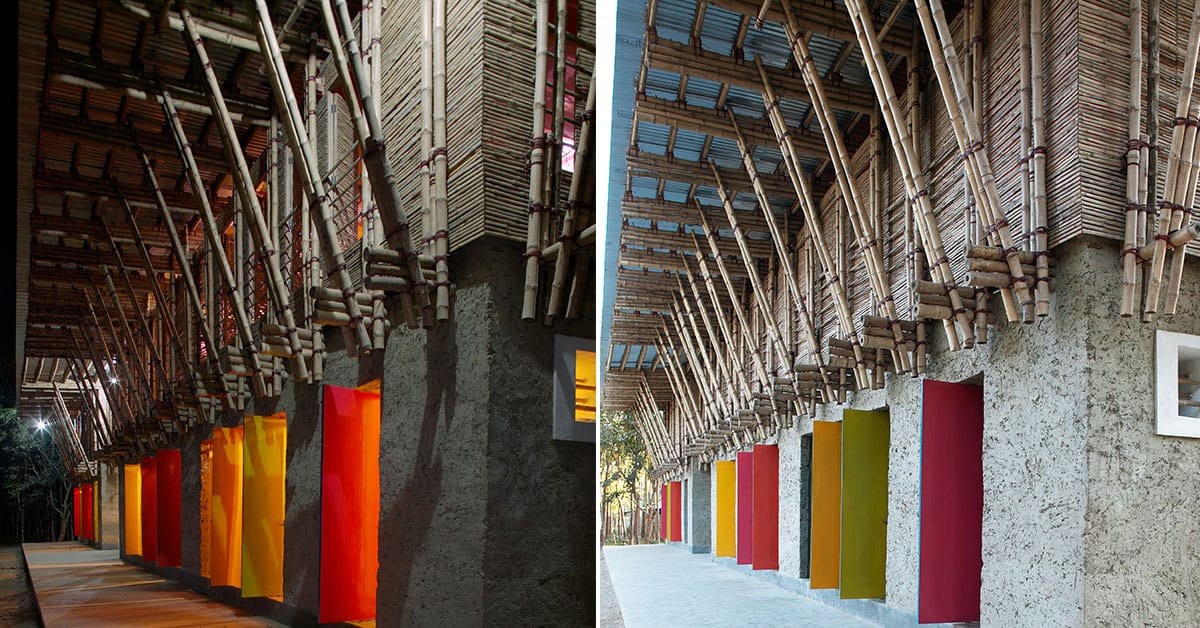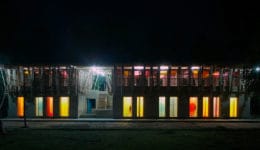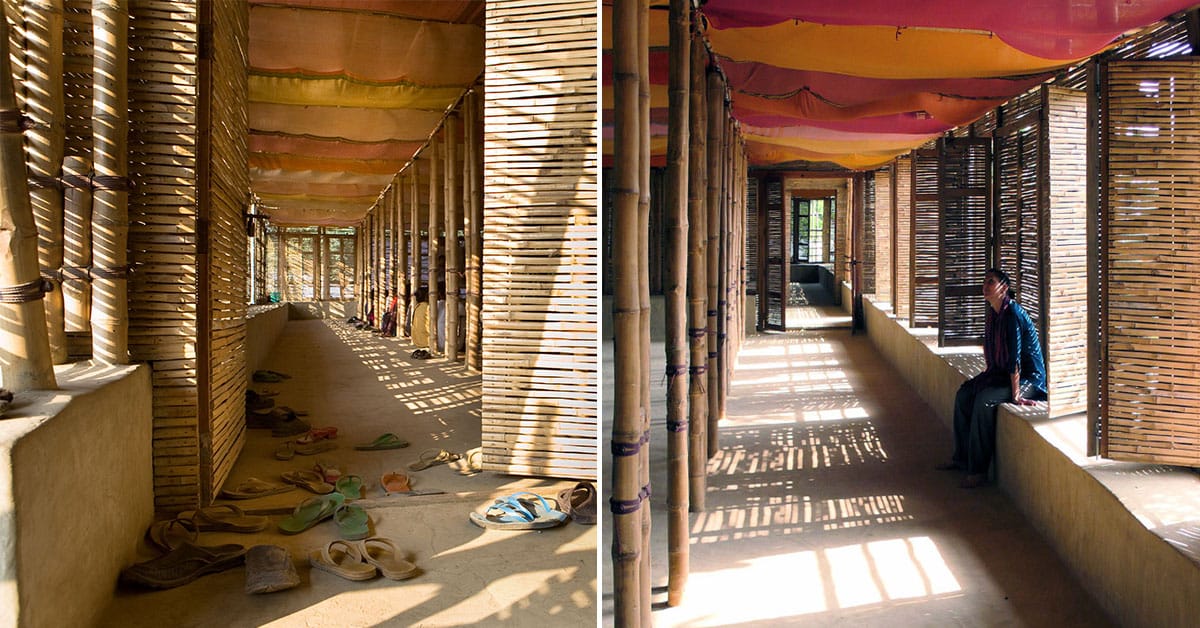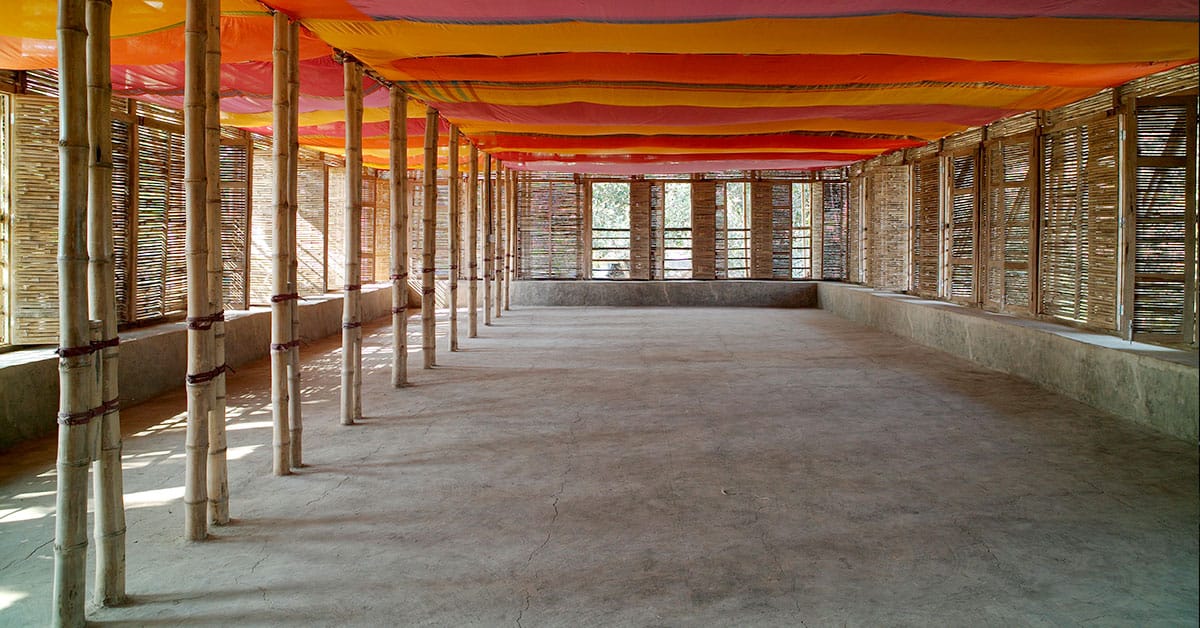 Winner of the Aga Khan Award for Architecture in 2007, the METI Handmade School is constructed of earth and bamboo, with a colorfully accented facade that allows the community to see and replicate its construction techniques. Photo © Kurt Hoerbst.
Winner of the Aga Khan Award for Architecture in 2007, the METI Handmade School is constructed of earth and bamboo, with a colorfully accented facade that allows the community to see and replicate its construction techniques. Photo © Kurt Hoerbst.
The METI Handmade School exemplifies how architecture can improve lives and preserve cultural identity. Located in the rural village of Rudrapur, Bangladesh, the school was designed by architects Anna Heringer and Eike Roswag to be built with local knowledge, local skills, and local materials.
Rudrapur’s vernacular earth and straw buildings are often poorly constructed and unstable, rarely lasting more than 10 years. As result, they’re being replaced by generic buildings made from brick and concrete — expensive materials that require a lot of energy to produce and transport. The METI Handmade School offers a more sustainable solution, illustrating how traditional methods can be adapted to produce larger, more durable buildings.
Comprising an earthen ground floor and a bamboo upper floor, the design by Heringer and Roswag improves historic techniques by adding a brick foundation and building stronger walls using a mud and straw mixture produced with the help of water buffalo that trample the materials together. The walls are built in 65cm layers, stacked by hand without the need for any formwork; each layer is dried and trimmed before the next one is applied.
The upper floor and roof are built primarily from locally harvested bamboo frames and trusses that were designed, tested, and built on site — lashed and pinned together on the ground and then moved into place using only human labor. The open and airy space is wrapped in bamboo slats that bring in diffuse natural light while acting as a passive ventilation system. Inside, the three spacious classrooms feature small, organically shaped “caves” where children can read, meditate, or play once their lessons are done.

The exterior facade is punctuated with colorful doors and drapes, but otherwise left unfinished to show the community how it can be replicated. The thick earthen walls and carefully placed fenestration keep the building cool during Rudrapur’s hot summer months.
The Handmade School was developed in collaboration with Bangladeshi NGO Dipshikha, whose Modern Education and Training Institute (METI) was created to help students realize their full potential in creative and responsible ways. It was built entirely by a team of local builders, laborers, teachers, and even the young students themselves. The building reinforces the school’s mission by expressing the potential of the local materials as well as the local population, and the architect hopes the techniques will be reproduced to further improve the quality of life in the region while preserving its traditions.
As the school shows, architecture is not just about a building, but about building community. For this, it was recognized in 2007 with the Aga Khan Award for Architecture, which celebrates excellence in addressing the needs and aspirations of communities in the Muslim world.

























